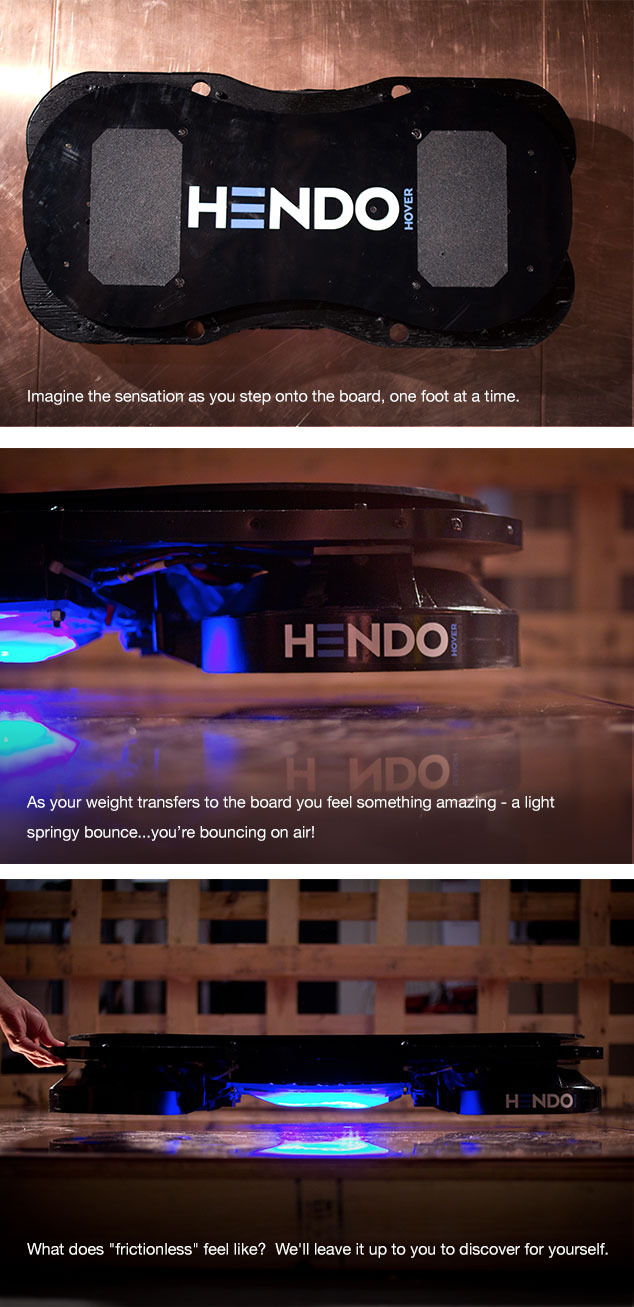
The hoverboard introduced in the 1989 film Back to the Future II sparked an entire generation of technologists eagerly slobbering for the day that the gadget finally becomes a reality. Two and half decades later, a Silicon Valley-based startup called Hendo is on the cusp of realizing that dream with its Hendo Hoverboard, a skateboard-sized platform that levitates an inch off the ground. Founded by husband-and-wife team Greg and Jill Henderson, Hendo’s board is the closest thing to Marty McFly’s fictional board, yet at the same time is still way apart.

Unfortunately, the Hendo Hoverboard cannot float high off the ground nor maneuver in such a fluid manner as Marty’s board, but it can levitate an inch off the ground using a proprietary Magnetic Field Architecture (MFA) incorporated into four engines situated beneath the board. Propulsion is accomplished by performing the same pedaling movements of skateboard riding or by alternating the forces projected beneath the board from the MFA system. Meaning, users will still maintain a degree of control over the board’s movement’s.
Check out the video below to see the Hendo Hoverboard in action:
Similar to a maglev rail, Hendo’s hovering is confined to a specific surface, and it’s not pavement. The use of magnetism dictates that the board requires a surface made of a non-ferromagnetic conductor, such as copper or aluminum; this is why the skating half-pipe in the video above is not made of the usual plywood. Furthermore, the batteries in the current prototype run dry in less than 10 minutes.
This is okay, because the Hendersons’ goal was not actually to create a hoverboard, but to draw attention to the underlying technology; it‘s a proof of concept product aimed at sparking debates around MFA and gaining traction through venture capitalist investments.

The Kickstarter campaign will not only provide backers with Hendo Hovers, but also with Whitebox Developer Kits, a Bluetooth 4.0 controlled – which means it can be operated with a smartphone – hovering box that users can use to perform experiments. The Whitebox is powered by rechargeable LiPo batteries that grant 12 to 15 minutes of lift from a two-hour charge.
With a whopping 48 days to go, the campaign has already surpassed its funding goal of $250,000, sitting at $368,699. All the hoverboard replicas are currently sold out, but curious users can still opt for a Whitebox to hover around their desk and dazzle colleagues.
Via Kickstarter
Advertisement
Learn more about Electronic Products Magazine





